2018 Specialized Epic - First Ride
For Specialized, the Epic is an important bike that shares a deep history with the brand. Since its inception fifteen years ago, the bike has been ridden to 96 major victories around the world, including World Cup wins, World Championship, marathon cross-country, and national level race victories. More recently, the Epic was piloted by Annika Langvad to victory at the XCO World Cup opener for 2017 in Nova Mestro, Czech Republic.
For 2018 Specialized has given the Epic its most drastic facelift to date. In a similar, albeit slightly more cautious vein of the longer, slacker, lower mantra of many new trail bike releases, Specialized have reworked the geometry of their XC race bike in order to make it more stable on today’s burlier XC World Cup tracks. They haven’t stopped there, however, and the company has completely reworked their Brain suspension technology in an effort to make it more effective for the terrain that has become the norm on modern XC race tracks.
For 2018 Specialized has given the Epic its most drastic facelift to date. In a similar, albeit slightly more cautious vein of the longer, slacker, lower mantra of many new trail bike releases, Specialized have reworked the geometry of their XC race bike in order to make it more stable on today’s burlier XC World Cup tracks. They haven’t stopped there, however, and the company has completely reworked their Brain suspension technology in an effort to make it more effective for the terrain that has become the norm on modern XC race tracks.
Specialized Epic Details
• Intended use: XC
• Rear wheel travel: 100mm
• Fork travel: 100mm
• Wheel size: 29''
• 69.5º head angle
• 12x148mm rear axle
• Sizes: S / M / L / XL
• Women’s specific models
• ~1,900g frame (claimed for a medium w/ shock)
• Brain suspension
• Available as a frame option.
• MSRP: $2,800–$10,100 USD (complete) w/ eight model options.
• www.specialized.com
• Intended use: XC
• Rear wheel travel: 100mm
• Fork travel: 100mm
• Wheel size: 29''
• 69.5º head angle
• 12x148mm rear axle
• Sizes: S / M / L / XL
• Women’s specific models
• ~1,900g frame (claimed for a medium w/ shock)
• Brain suspension
• Available as a frame option.
• MSRP: $2,800–$10,100 USD (complete) w/ eight model options.
• www.specialized.com
The Epic is available in eight builds, each with two color options, starting with the Epic Comp (Alloy) and going up to the S-Works XTR Di2. In addition to this, there are three women's specific model options of the bike. It can also be purchased as a frame/shock/fork with two options available; the S-Works and the S-Works Limited edition (which comes in a wild digital camo paint job). Full bike builds range in price from $2,800–$10,100 USD.
Updating the Epic
For the Epic's update, keeping in mind that the Epic is an XC race bike, Specialized approached the revision with three goals—make it lighter, smarter, and faster. Specialized felt that if they could improve the Epic in each of these areas they would continue the bike's legacy and make it a more capable race-winning machine.
The 2018 Epic frame lost a considerable amount of weight, with the S-Works frame shedding a claimed ~345g while the Comp/Expert frame lost a claimed ~525g. This is from the frame alone and, with the S-Works frame, for example, Specialized claim that it’s the equivalent of losing the chainstays completely, while on the Comp/Expert model it equates to losing the entire Brain shock setup—shock, hardware, all of it.
In order to drop that weight Specialized actually removed the chainstay/seatstay pivot, moving to a flex-stay setup rather than the typical FSR layout seen on Specialized bikes. This alone allowed the team to shave a claimed 240 grams from the chainstays, a weight saving of approximately 39% over the previous model.
Geometry Changes
During the development process, Specialized worked extensively with racing legends Ned Overend and Christoph Sauser, who would ride the updated frames with zero information on what had changed in an effort to steer clear of any preconceived notions. Nevertheless, despite having many positive things to say, pure XC guys like Ned and Christoph questioned the move to longer and slacker geometry more than the rest of the team developing the bikes. Specialized note that it was a tough bit of the design to work on for the entire team, with everyone knowing that they needed more stability from the bike, but also aware of the potential to lose the sharp handling required for technical climbing.
Despite the concerns, Specialized surged forward, confident that they could make it work. They knew that older XC bikes, with their steep head angles and short wheelbases, weren’t adequate for today’s rougher courses and the need to adjust these attributes in order to produce a more capable XC race machine were obvious. All of the geometry changes were done in order to make the Epic a faster bike, and in making it faster they believed that they had to make it more stable at speed in rough terrain.
Specialized note that a lot of brands slacken the head angle and put larger tires on their bikes in order to achieve a more stable ride, but the big ’S’ went a number of steps further, with the most unique and possibly the largest talking point being the move to a shorter offset on the fork. In addition to this, they lengthened the reach (roughly 10mm per size) and shortened the stem 10mm on all models.
When the development team lengthened the bike and left the offset at the stock 51mm (for a 29” fork), they found the front end to become ‘floppy’, so they began working on how different offsets would affect the handling. Finally, they arrived at a 42mm offset (the same as a lot of 27.5” forks), bringing the front hub closer to the rider, which they found to stabilize the front of the bike but not enough to deaden the steering—something they claim left it responsive at the hands for technical climbing and similar situations.
Redesigning the Brain
The last part to consider, and another key part of the Epic line is the Brain shock, a technology developed by Specialized to give XC racers a solid platform that still tracks when the wheels are rolling over obstacles (and without a need for a lever to activate the platform). It’s a system that Specialized say is all about efficiency and momentum and they went to work on redesigning it from the ground up for the 2018 Epic.
Specialized suspension engineer, Mike McAndrews, said that chassis control is a major component with the Epic’s handling and the Brain is key in controlling the inputs from the rider. In updating the Brain technology, Mike says they spent a lot of time working on fluid technology, and how this fluid moves from the shock down to the Brain, now situated at the rear axle. Situating the Brain just behind the rear axle also improved the shock's timing, making it more sensitive to trail feedback. The relationship between the two is critical, and Mike sees this as one of the biggest improvements in all of the years that he’s been working on this system.
A couple of additional and pretty sleek details in the reworked Brain design are that the shock clevis is now part of the system, with fluid flowing through it and into the rest of the line. The team also removed the IFP and replaced it with a bladder system, a move that Mike says improves the shock action, making it smoother and more predictable.
In basic terms, the Brain works by preventing input from the rider from pushing through into the shock's travel, staving off fluid movement until an input from the ground, at the wheels, is felt. At this point, the valve opens up allowing fluid to flow through. Beyond the ‘platform’ the compression in the Brain shocks is quite flat, which the team at Specialized find to be quite important for light XC bikes.
This is also where the difference between the unisex models and the women's specific models comes into play (beyond the usual women's specific saddle and grips, for example), with the damper on the latter being of a lighter tune, allowing for what Specialized feel is a better ride quality for female XC racers.
Four Questions with Mike McAndrews
Engineer of the Brain Technology and the Director of Suspension at Specialized
 Tell us more about how chassis control was worked on — what role did the inertia valve play?
Tell us more about how chassis control was worked on — what role did the inertia valve play?
The inertia valve (or Brain) is a fluid control valve on the compression circuit that can only move to its open position from inputs coming from the wheels... and not from normal inputs coming from the chassis. With this system, we can make the shock and fork have a firmer compression damping value for the chassis inputs, basically making the shock firm to better stabilize the chassis movement from events like hard pedaling and weight transfer from steep climbs. With the Brain, this added level of stability improves pedal efficiency without compromising bump performance of the system overall.
 While this drove pedal efficiency, how did it work with the other tech to drive the overall ride quality?
While this drove pedal efficiency, how did it work with the other tech to drive the overall ride quality?
The inertia valve is great for differentiating the inputs and allowing us to have two different compression damping values, firm for chassis input and softer for bump; but it is not the valve used to control the ride dynamics of the shock while in the active mode. For this, we use our proprietary Spike Valve design. This is a multi-circuit compression valve design that allows for good low and mid-speed damping control but goes regressive at the high shaft speeds ensuring the shock does not over-produce damping. Keeping the compression damping in check at high speeds improves square edge bump absorption, straight-line stability, and overall traction. For this new design, we spent more time on the ride dynamic circuits than the Brain so as to ensure the momentum carrying attributes of the bike were greatly improved.
 What role did the fluid flow have, and how did you work on it, in order to achieve these characteristics?
What role did the fluid flow have, and how did you work on it, in order to achieve these characteristics?
Damping hysteresis is a term we use to define how a shock performs at the turnaround point in the stroke between compression and rebound, generally at the higher shaft speeds. A lower damping hysteresis means better damping control at the turnaround which translates to better control of the contact patch…meaning better traction for all conditions. Fluid flow through a given damper design can have a big impact on damping hysteresis so, for the new design, every part that influences fluid flow was designed specifically to maintain a laminar flow pattern of the fluid while preventing as much turbulent flow as possible. So, fluid port size, shape, angle and finish are critical as well as the overall layout of the valve circuits in achieving this goal. (The damper body/clevis/hose interface are a good example.)
 What benefits were you seeking in replacing the IFP with a bladder?
What benefits were you seeking in replacing the IFP with a bladder?
Most internal floating piston designs have a problem with piston flutter as the shock moves. This flutter can result in a ‘stick/slip’ condition that affects shock performance all the way to the wheel. The bladder is a system that separates the nitrogen charge from the shock fluid using a thick rubber membrane (the bladder). As the shock moves in and out, the bladder simply compresses and expands without having to overcome the stiction of the IFP system. This makes for smooth and predictable shock action which again has its biggest effect on improving traction in all conditions.
We hit the trails of Mountain Creek in New Jersey and had the chance to experience some true East Coast rock gardens aboard the Epic. We had a fairly straightforward climb from the base of the mountain to the upper portion, but with the park closed, we enjoyed climbing some of the single black diamond trails as well while riding the bike in order to really check out the technical climbing abilities of the new Epic.
Although there was only time to ride the bike once, it was enough to get an initial impression of what the geometry updates and Brain shock were capable of, and it’s pretty impressive. The Brain has five positions, allowing the rider to control how much input is required before the Inertia Valve opens up and allows the suspension to smooth out the trail. Initially, I climbed the rather smooth trail with it in the mid setting but quickly moved it to its firmest position, based on the immediate terrain.
In the firmest setting the bike rides very much like a hardtail, and in saying that I mean how it felt under me (not the cliché ‘climbs like a mountain goat' reaction to a bike). It’s solid, and rough-ish until it hits something firmly enough in the ground to open up. When it does open up, there is a knocking felt through the bike. This knock was noticeable on the previous Brain and is still there today, and to be honest, given that I knew what the terrain was like that we were headed to and that I wasn’t a fan of the knock, I promptly found myself testing it in each of the lower settings.
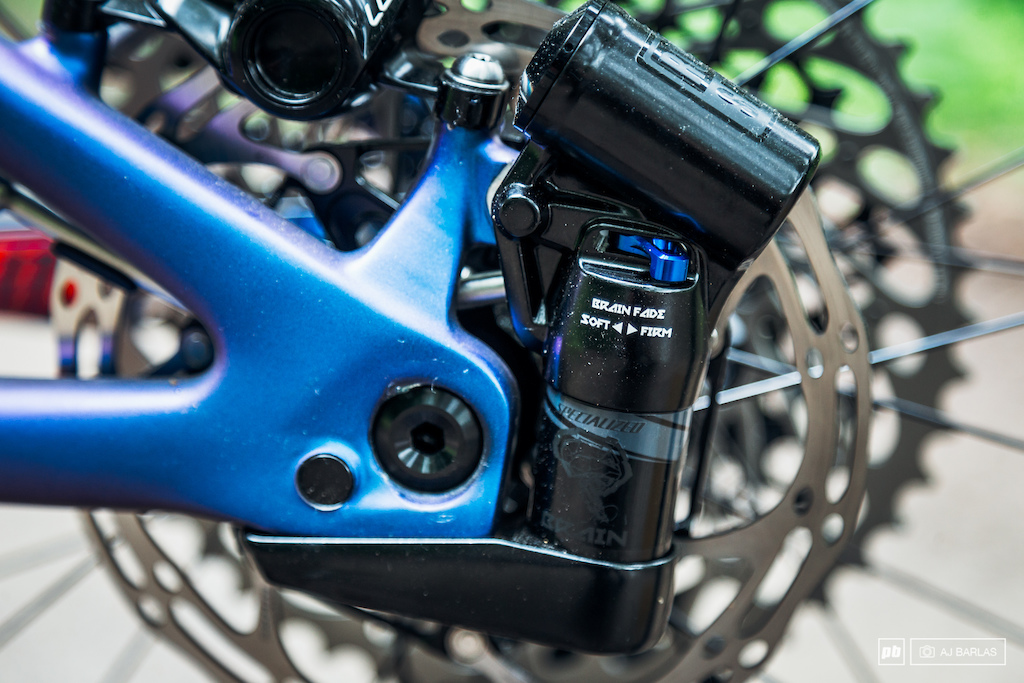
The setting for the Brain's ride characteristics and the amount of force needed to open the compression is controlled by this lever.
In one ride, it was difficult to really differentiate between each of the four positions that the Brain can be set to, but I did find that how pronounced the knock was gave a fair indication. In the end, for the rocky terrain that we chose to ride the Epic on, I found the “Soft” setting to work best, and the knock was virtually non-existent with this setting. Charging into a trail called Twist the bike opened up and was ready to rally, and once I was comfortable with it, really surprised me with its capabilities.
Were the key goals with the bike noticeable? I’d say yes. The most appealing and confidence inspiring trait was the stability that this short-legged race weapon had in the Jersey rocks. The short 100mm travel front and rear was easily noticed, with the bike often finding full travel and wanting to bounce around, but instead handling really surprisingly well on such terrain, while not having any issues with tight, technical climbing situations. The stability was also very easily noticed while cornering, but it was still lively enough to flick around, which was no doubt helped largely by the light weight as well.
In the short time aboard the Epic, I realized that modern XC bikes are heading in a similar direction as the trail and all-mountain portion of the market, which I think is great to see. While this is not a trail bike, the Epic still adopts the longer reach, steeper seat-angle, shorter stem approach, just at a different level, and one that is perhaps more appropriate for XC racing. Add to that the changed fork offset and updates to the Brain suspension technology and we’ve got a cross-country race bike that is pushing into the future of what a bike of this nature should be.
Author Info:
Must Read This Week
Sign Up for the Pinkbike Newsletter - All the Biggest, Most Interesting Stories in your Inbox
PB Newsletter Signup
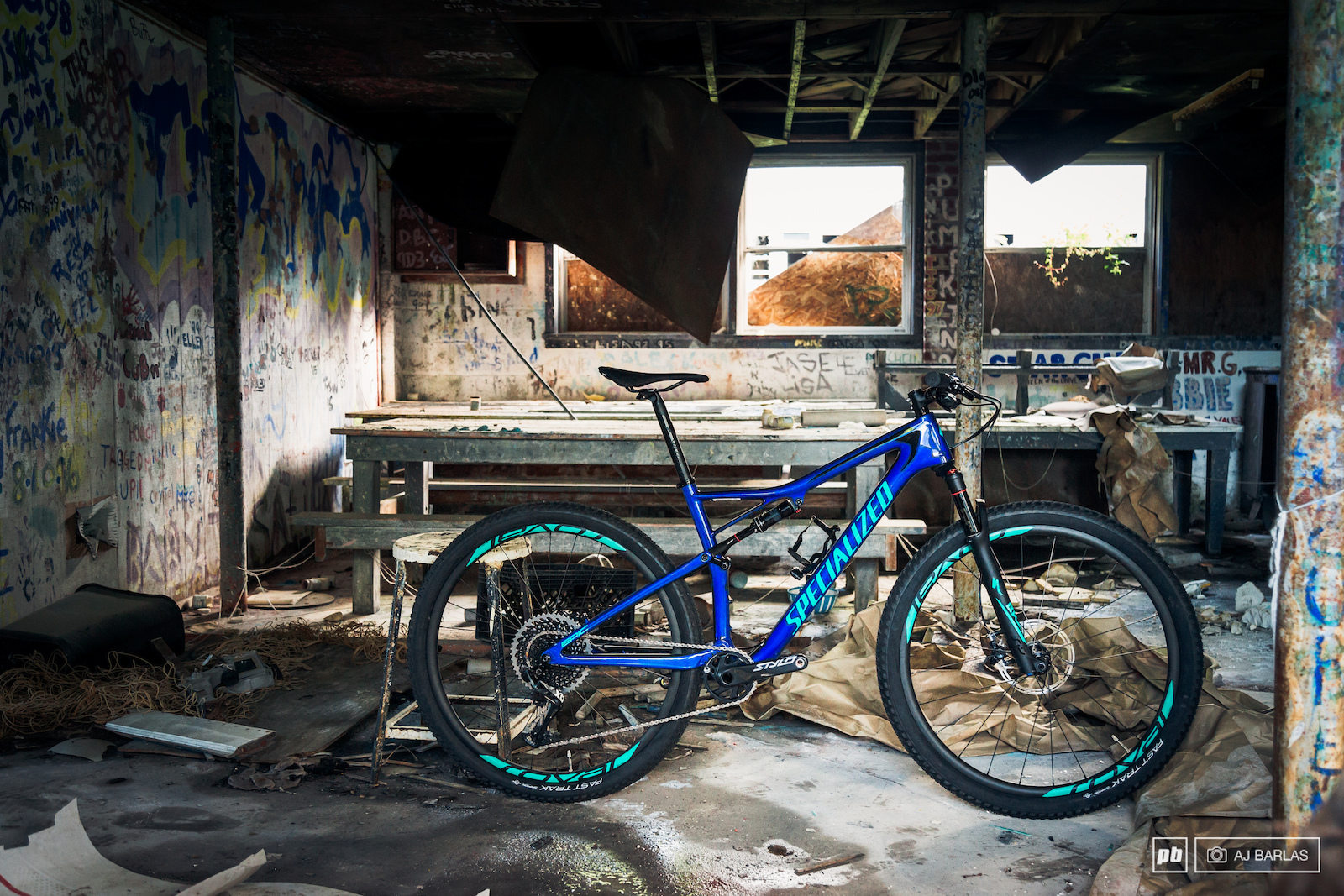
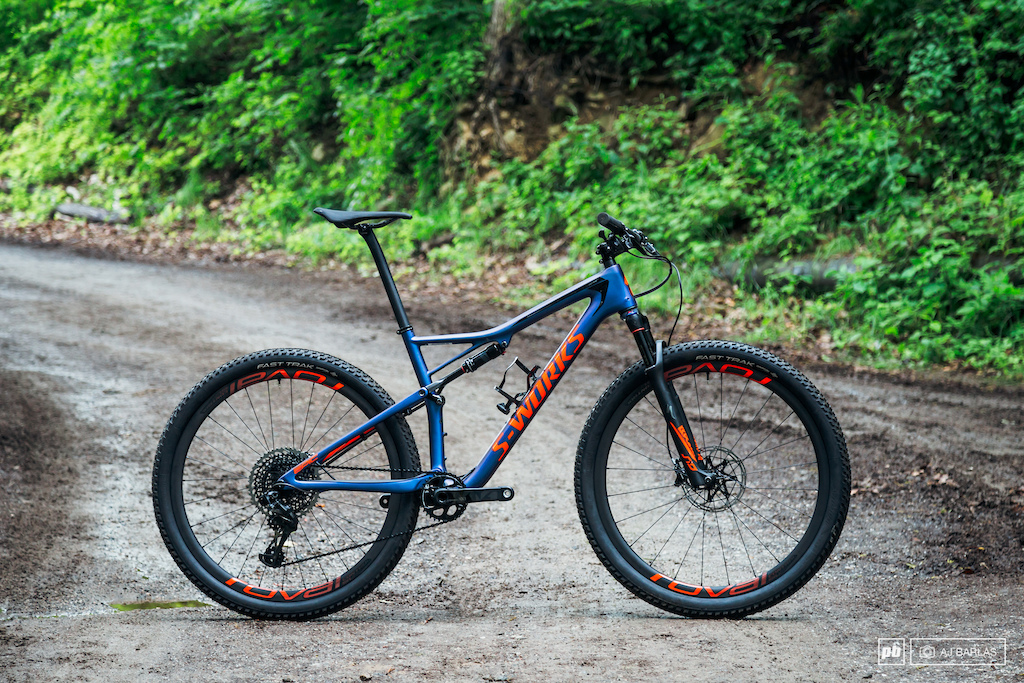
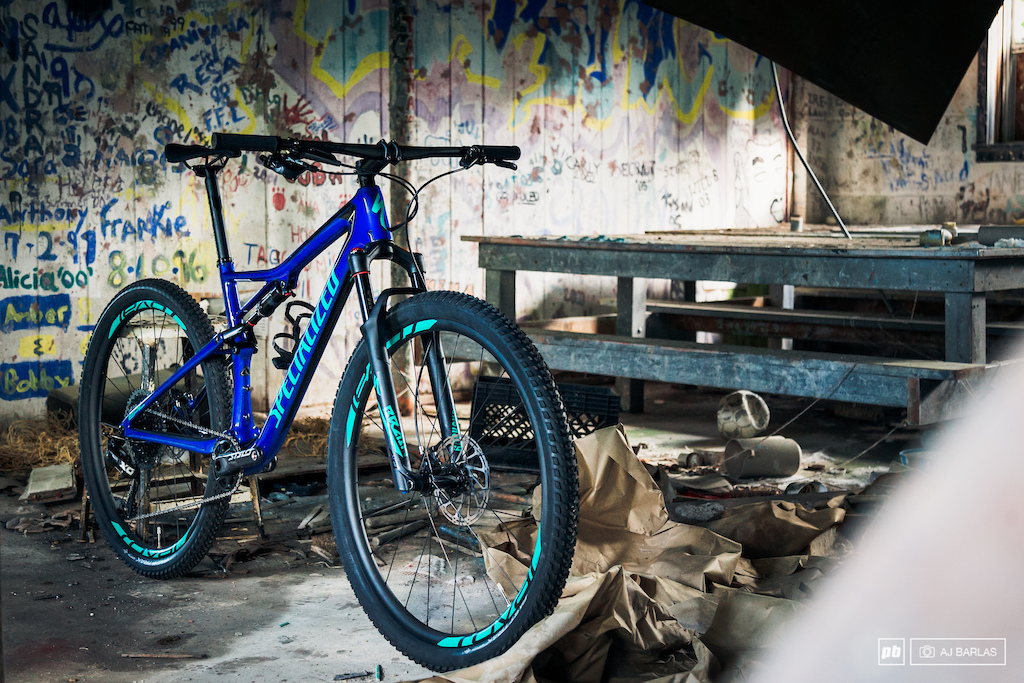
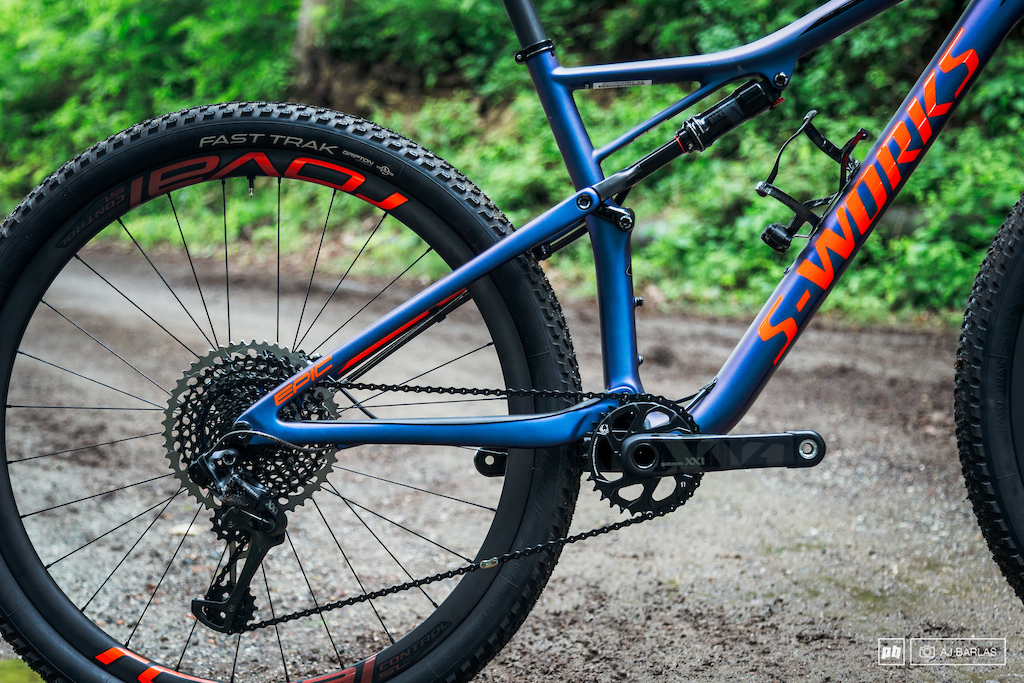
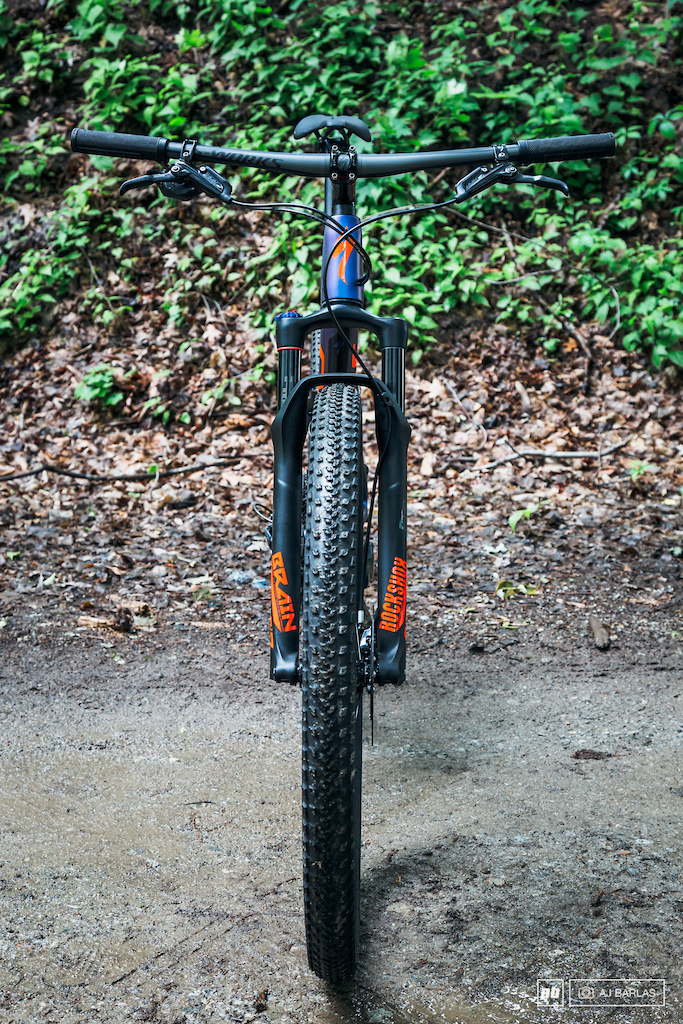
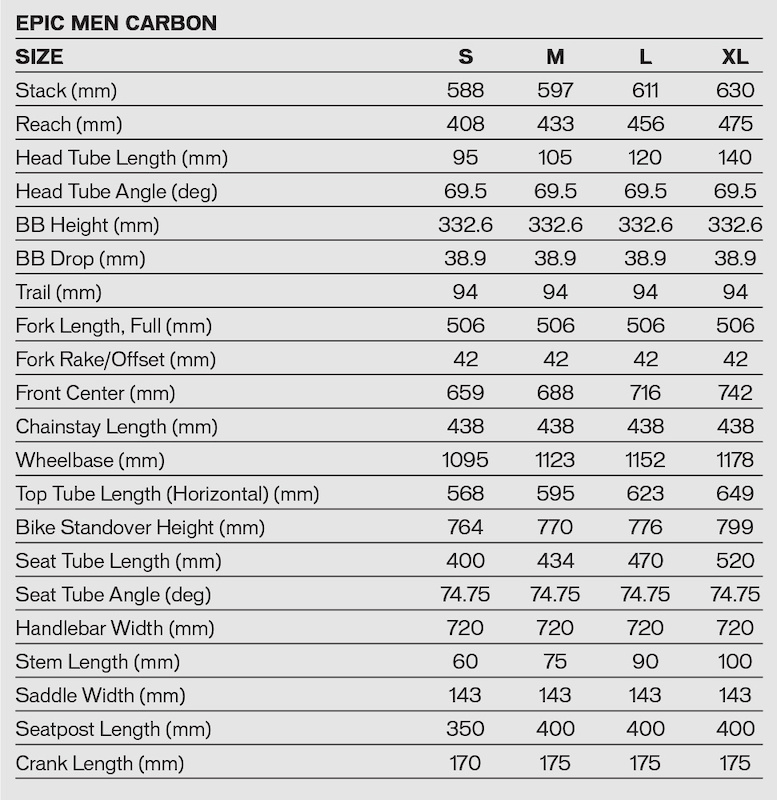

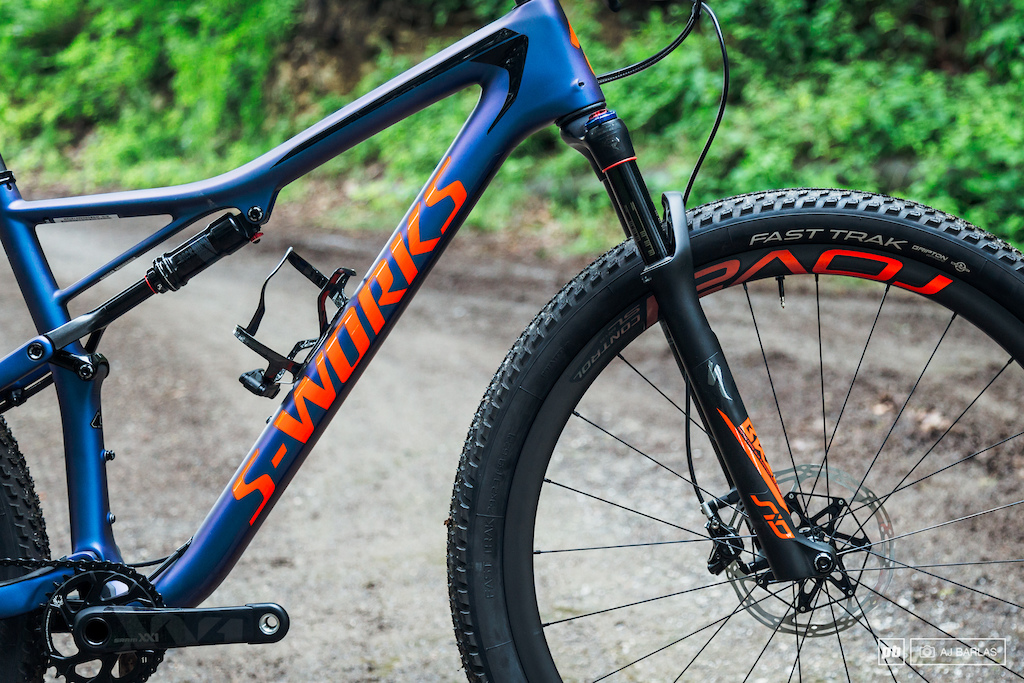
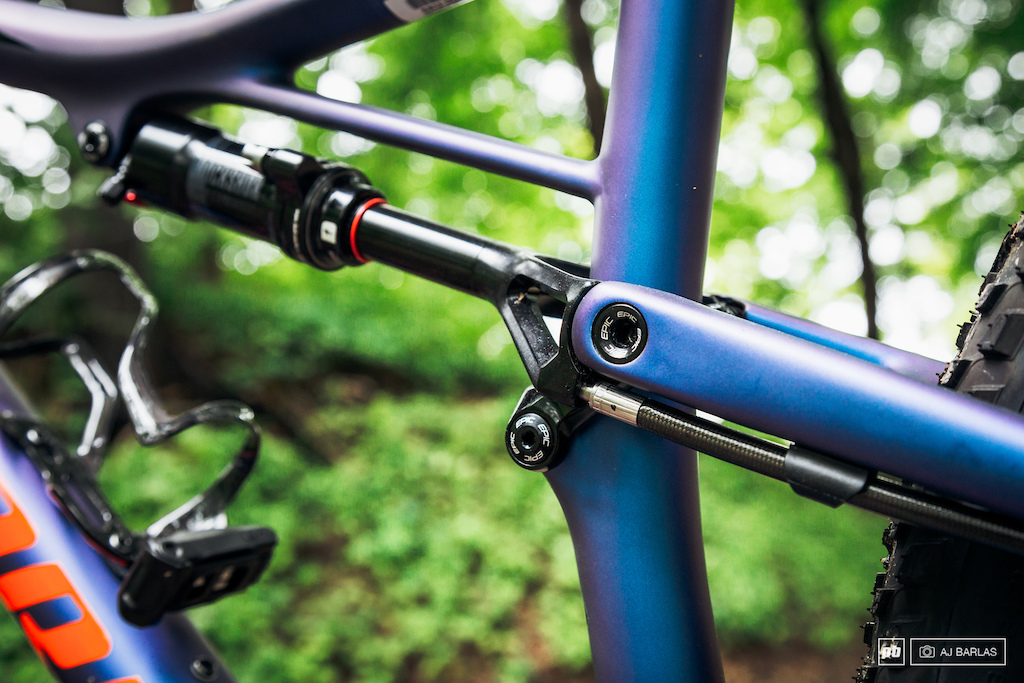
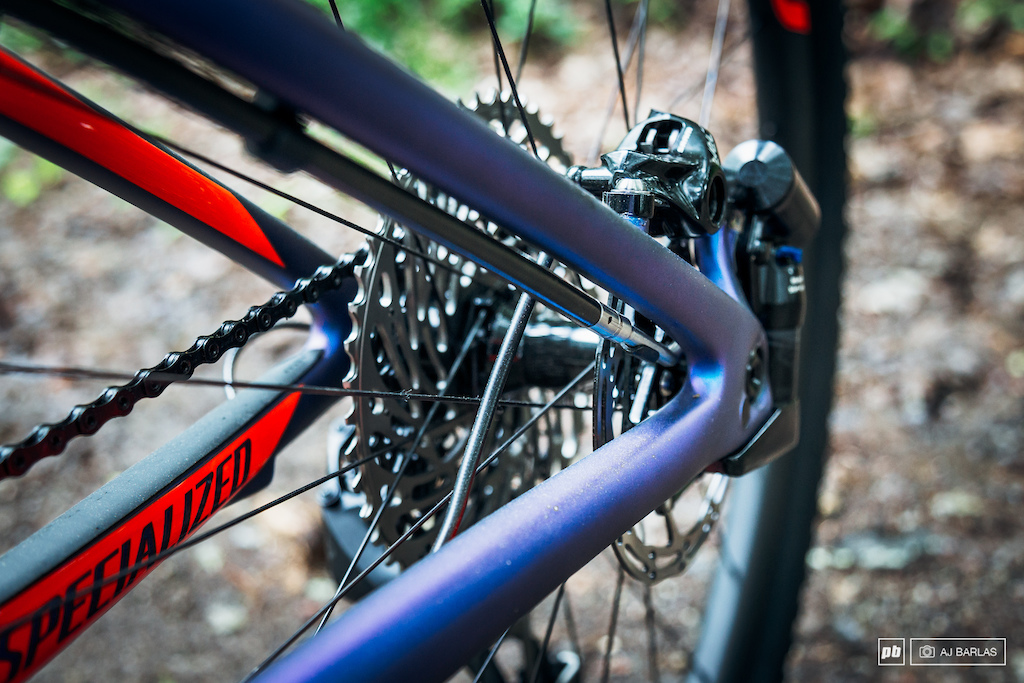
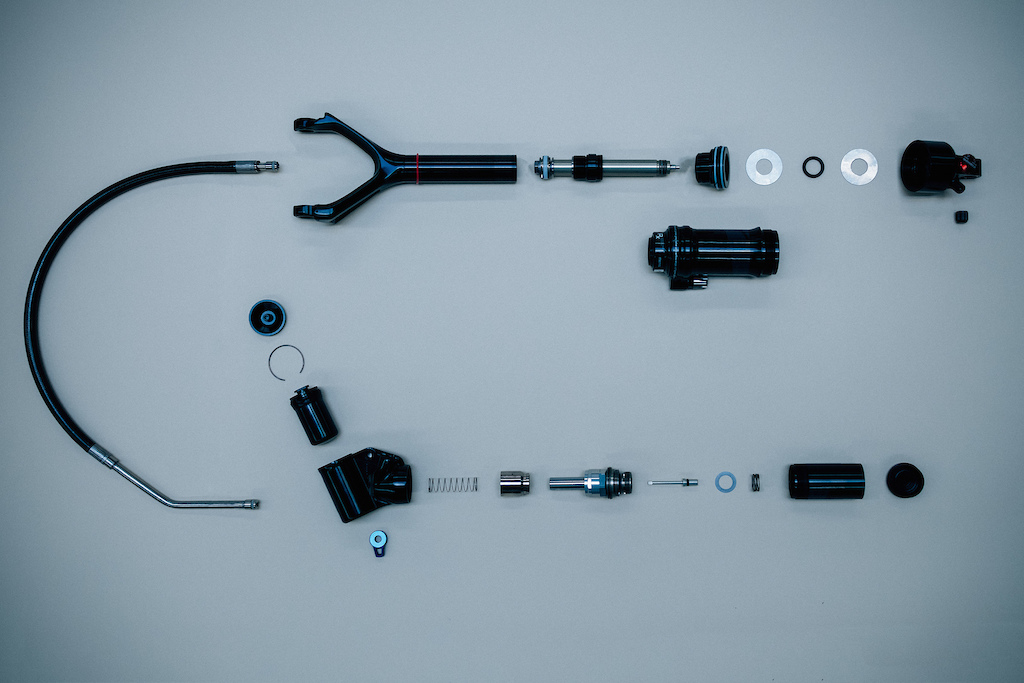


 Member since May 8, 2011
Member since May 8, 2011
There's a lot more that goes into a bike than one pivot or patent, and it's worth looking at the bike as a whole, to see what they're trying to do.
The horst link patent, that expired (well, i guess it did...), caused an influx of host-link bikes that previously used different systems, for example from Transition, lately Scott with the Genius, many brands started selling bikes in the US, which were previously EU only, etc. That's why it's talked about. But i fully, 100 % agree, that it's the package that matters, not the position of one pivot. It does give quite a lot of freedom to the designers though, with a single pivot you're much more cornered as to where to put the main pivot to get the pedalling characteristic.
It changed the leverage ratio by moving the angle of the pivot as the suspension moved. Great idea but the bearings ,pivot axle and rocker arms added weight a size medium frame was 9lbs.
But really, how much rotation would the chainstay pivot allow for? It isn't much really. A hardtail probably flexes the same amount.
Putting terminology and patent discussions aside for a moment, I agree with you that the 09-12 SX design did bring unique leverage ratio tuning ability vs. the current design, but also weighed more. It just didn't do it through the use of a truly concentric pivot.
That or get a bikeyoke and voilà every shock is now useable.
Damm you got some coin.
No one is going to buy an epic and not run the brain shock, and if you looked at the exploded view this shock is way easier to service than the previous model. Can be done in house, air can is removed from the top.
Sometimes the stuff is expensive, but comes with the territory of buying such a specific machine.
It's a thoroughbred race bike. The point is to be the absolute pinnacle of what they can produce. To make the bike perform it's absolute best. Not what a buy n sell hunter needs in 5 years.
adjective: specialized; adjective: specialised
requiring or involving detailed and specific knowledge or training.
concentrating on a small area of a subject.
designed for a particular purpose.
It has been alluded to but at least on this Epic the proprietary shock should not be a problem for anyone as there is nothing out there that is an "upgrade" to it. It already comes with the best shock you can get for the application.
www.bikeyoke.de/en/bikeyokes
What a ridiculous reason. Same customer won't buy a shimano brake because you can't service the master cylinder.
"we find that in this setup it more agile than curent bikes"
"with this combo, 26" works the best"
????
Not to worry, That Guy is always out there who wants to throw a Fox 40 on this thing then head to the forums to complain about how Specialized won't accommodate his desire to make an XC race bike "more plush."
"What up braaaah, can you run a Saint group on this?!!! That sucks, no mounts for a chainguide, braaaah! Braaah, I need to put 2.5s on there, and they should spec it with 820 Renthals, braaaah!"
I snatched up one of the last Original Geo Ripley's because this long/slack trend doesn't work for me - tried a few.
The support from the Cannondale rep in Ontario and the technology is second to none.
I love people who buy high-end bikes then are disappointed that they have to, you know, service it. Have you seen the inside of a modern shock? It's not a hammer.
geometrygeeks.bike/bike/specialized-epic-2018
So fun to see that Giant missed the train (again) when they went back to 29er on the new Anthem : it has the "old" 51mm offset!!!